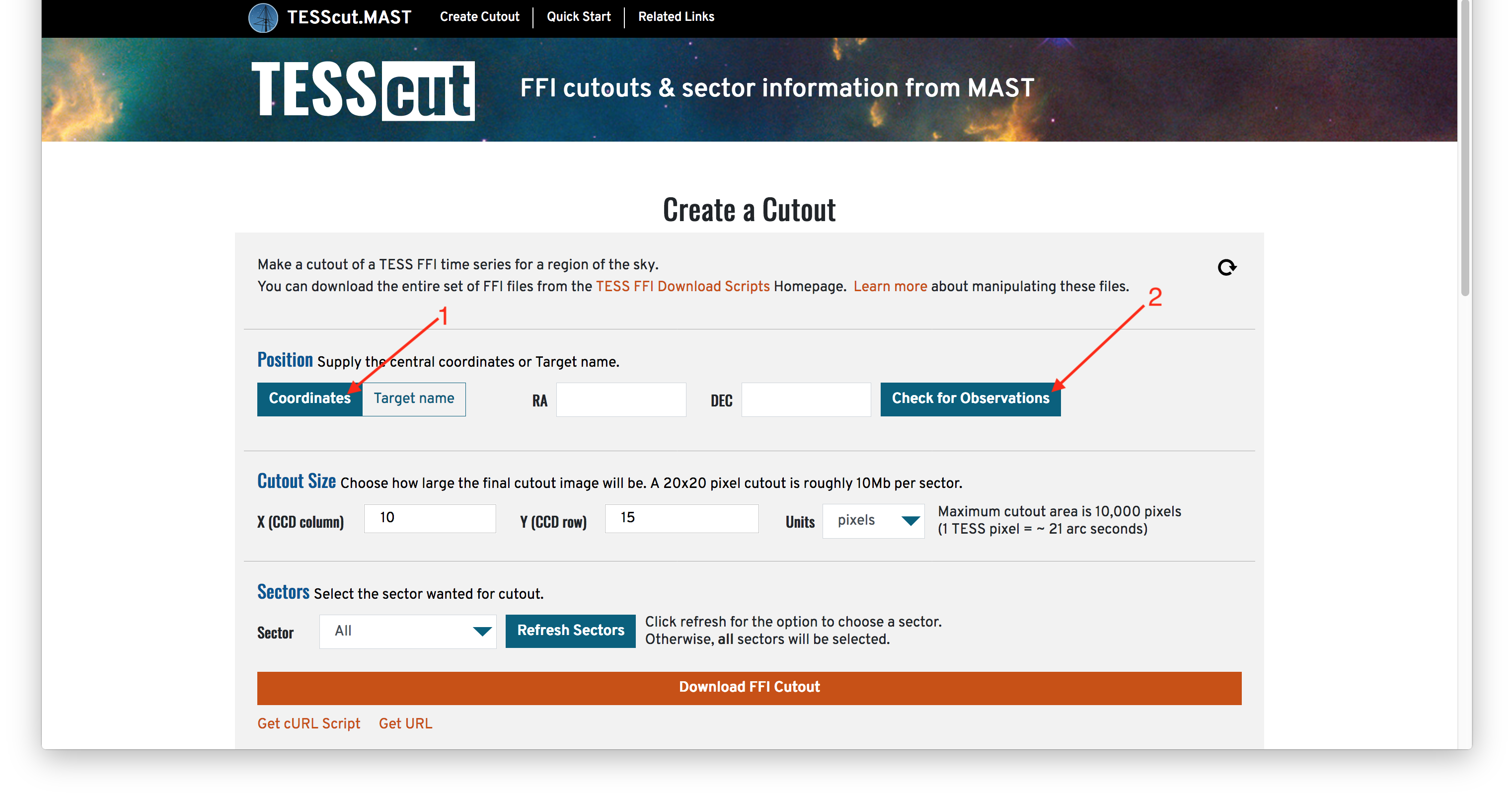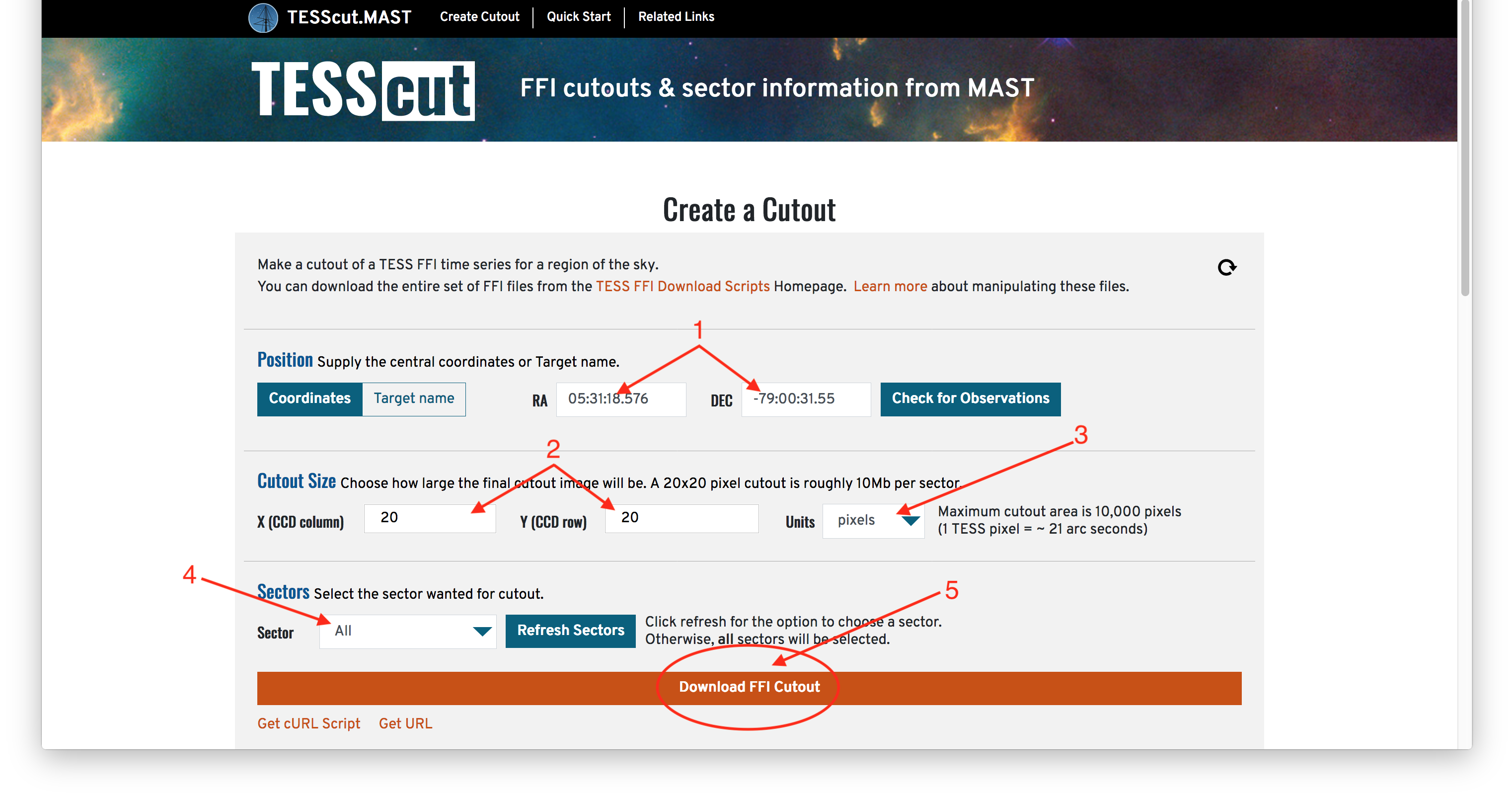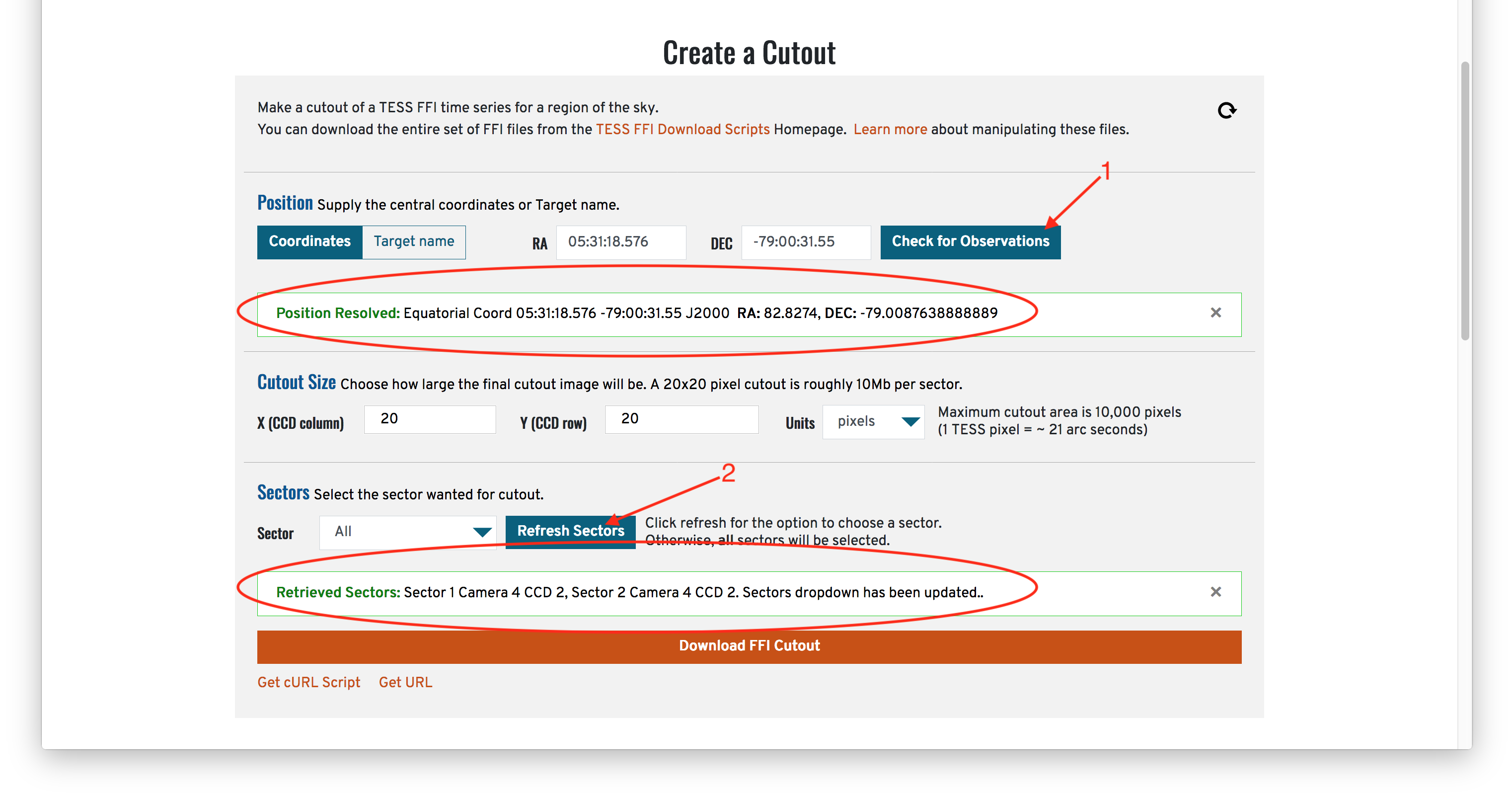Page History
| Divbox | ||
|---|---|---|
| ||
This tutorial will show you how to create a cutout of TESS full frame images using the web-based TESSCut interface. We will be creating a cutout of the target TIC 261105201, using the search by coordinates option. This is a companion to the Python notebook that shows how to conduct a similar cutout request using Astroquery. |
| Divbox | ||
|---|---|---|
| ||
Step 1 - Visit The TESSCut Webpage: The first step is to visit the TESSCut Web UI. Note you can specify a central coordinate in two ways: by entering a celestial coordinate or by entering a target name to resolve into coordinates. In this example, we will use the Coordinates resolver option by clicking on that button (Item #1). Note that if you have a coordinate of interest and aren't sure if TESS observed that area of the sky, you can enter a coordinate and hit the Check for Observations button to see what data are available make sure the TESSCut UI understands your position before you ask for cutouts. (Item #2). |
| Divbox | ||
|---|---|---|
| ||
| Divbox | ||
|---|---|---|
| ||
Step 2 - Specify Cutout Parameters And Download The Cutout(s): First we will enter the name coordinates of our target (Pi Mensae05:31:18.576, -79:00:31.55) in the Target box (Item #1). If you'd like to make sure the name resolver is converting your target into correct coordinates, you can always press the Resolve Target button to see what coordinates will be used before asking for a cutoutNote that several ways of specifying coordinates is allowed, including decimal degrees. Next we will specify the size of our cutout (Item #2). Note that you can specify the size in several units (Item #3), including pixels or arcseconds, but be careful that you have selected the units you want because there is a limit on how large of a cutout you can make! If your cutout spans multiple sectors, cameras, or CCDs you will get a separate cutout FITS file for each region as a zip file. If you know you only want cutouts from a specific Sector, you can specify that in the Sectors area (Item #4), otherwise the default is to cutout across all available Sectors. Once you have all the parameters of the cutout filled in, you can use the Download FFI Cutout button (Item #5) to initiate the request and download the zip file containing your cutouts. Note that if you'd like to see what your cutout request would look like as a cURL command or URL request, perhaps to use and modify in the future, you can use the Get cURL Script and Get URL links below to see the corresponding calls that would result in the same cutout you asked for using the browser. |
| Divbox | ||
|---|---|---|
| ||
| Divbox | ||
|---|---|---|
| ||
Step 3 - Specify Cutout Parameters And Download The Cutout(s):Understanding How The Check For Observations And Refresh Sectors Buttons Work: If you would like to make sure your coordinates are being interpreted correctly before you ask for cutouts, you can hit the Check for Observations button (Item #1). This will return in the circled text area the position the UI thinks you are asking for. Similarly, if you would like to see what Sectors, cameras, and CCDs contain data for your coordinate or target, you can hit the Refresh Sectors (Item #2) button once you've entered a coordinate or target name. This will run a query to determine what data are available in the circled text area. You can use this to check for available data before you ask for cutouts. |
| Divbox | ||
|---|---|---|
| ||



